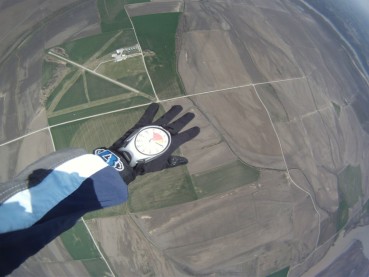This content is associated with The Open University's Sport and Fitness courses and qualifications.
Over the last 50 years the interest in extreme sports has increased significantly, with risk-taking behaviour in sport being used to describe engagement in high-risk leisure activities such as skiing and skydiving which tend to be characterised as activities that involve hazards (Jones et al, 2015). These are no longer niche pursuits shrouded in mystery, with several high-risk sports gaining visibility through their increased broadcast and social media presence and their transition into mainstream competitive domains. For example, the Winter Olympics now includes several sports that previously only sat within the X Games programme, such as slopestyle and the big air events.
We see these athletes as risk takers, even when we imagine people high-lining, snow kiting, or ice-climbing, we conceptualize them as individuals who wants to take risks, who are looking for an adrenaline rush. Early man evolved through taking risks, for example hunting to provide food and it seems that our primitive instincts still exert a strong influence as most modern human actions contain some inherent elements of risk: take the child learning to ride a bike. But the question remains why do some people seek out extreme and high-risk sports while others are content to avoid risk at all cost?
Does personality play a part?
Research examining personality in high risk sport frequently reports that those who participate tend to score more highly in three key personality characteristics, extroversion, openness and agreeableness when compared to other athletes or non-athletes (Klinar et al, 2017). Closely aligned to the personality research into risk-taking is Zuckerman et al’s (1964) research which introduced the concept of sensation seeking, a personality trait typified by the propensity of an individual to participate in high risk activities in their search for experiences and feelings, that are "varied, novel, complex and intense”.
Furthermore, and posing something of a challenge to researchers is that it seems that those who choose to engage in such activities don’t fully understand the reasons themselves (Pain and Pain, 2005), however, it seems likely that the answer to the why is underpinned by a complex relationship between personality characteristics, physiological arousal and performance (Jones et al, 2015). This physiological arousal is sometimes termed the desire for an “adrenaline rush” which occurs when the adrenal gland is stimulated through an activity that causes stress on the body such as an extreme sport (Heirene et al, 2016).
The quest for freedom
New research challenges the myth that those who engage in extreme and high risk sports are just adrenaline junkies searching for their next adrenaline rush (Brymer and Schweitzer, 2013). Their research suggests that this desire for a rush is secondary to a drive for experience suggesting that “people who engage in extreme sports are anything but irresponsible risk-takers with a death wish, they are highly trained individuals with a deep knowledge of themselves, the activity and the environment, who engage to have an experience that is life-enhancing and life-changing.”
These findings present a different interpretation to participation which perhaps relates more closely to a desire to escape the confines and restriction of current society. Participation can facilitate more positive psychological experiences and allow people to experience freedom and re-connect with nature (Brymer and Schweitzer, 2013). This need for freedom provides a contrast to the controlled and sterile World many people find themselves in, governed by technology, with recent statistics even reporting that children are spending as little as 16 minutes a day outside (Hurst, 2018).

This quest for freedom can also be viewed in juxtaposition to the formal restrictions that we have seen imposed over the last 50 years with health and safety regulations taking away all risk within society, but it seems the natural drive to push our boundaries has remained. As Professor John Adams discusses in his book ‘Risk’, people are using these types of sport as the antithesis to the sanitized and safer World in which we live, he suggested that "We have a profoundly ambivalent attitude to risk - all the heroes you find are the risk-takers, then you turn around and find the Health and Safety Executive looking over your shoulder making sure that you are safe".
Is it possible that as life has become safer the rise in the number of high-risk activities has occurred as a means of compensation? People want more from life and, as Barlow et al (2015) recognises, often crave life in a pure, simple and sharp form. Extreme sports allow people a return to nature, an antidote to the over-sanitised World we live, whether riding the waves or scaling a rock face these extreme activities provide unique, constantly evolving opportunities to challenge participants and fulfil their needs.










Rate and Review
Rate this article
Review this article
Log into OpenLearn to leave reviews and join in the conversation.
Article reviews